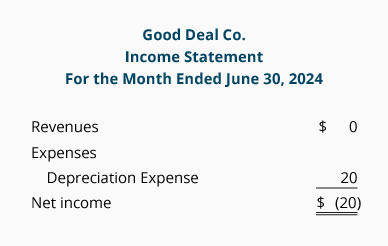
Depreciation moves the cost of an asset from the balance sheet to Depreciation Expense on the income statement in a systematic manner during an asset’s useful life. The accounts involved in recording depreciation are Depreciation Expense and Accumulated Depreciation. As you see, cash is not involved. In other words, depreciation reduces net income on the income statement, but it does not reduce the company’s cash that is reported on the balance sheet.
Since we begin the statement of cash flows with the net income figure taken from the income statement, we need to adjust the amount of net income by adding back the amount of the Depreciation Expense.
Depletion Expense and Amortization Expense are accounts similar to Depreciation Expense. They involve allocating the cost of a long-term asset to an expense over the useful life of the asset, but no cash is involved.
In the operating activities section of the cash flow statement, add back expenses that did not require the use of cash. Examples are depreciation, depletion, and amortization expense.
Next, we examine how depreciation expense is reported on the Good Deal Co.’s financial statement.
Please let us know how we can improve this explanation
Submit Feedback No ThanksThe only transaction recorded by Good Deal during June was the depreciation of its office equipment. Recall that on May 31 Good Deal purchased the office equipment (a new computer and printer) for $1,100 and it was put into service on the next day. Let’s assume that depreciation expense of $20 per month is recorded by Good Deal. As a result, Good Deal’s financial statements at June 30 will be as follows:

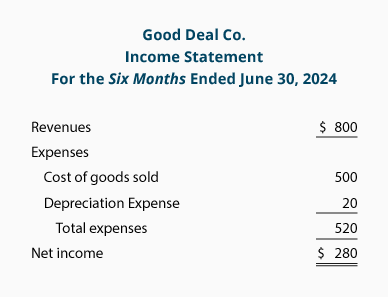
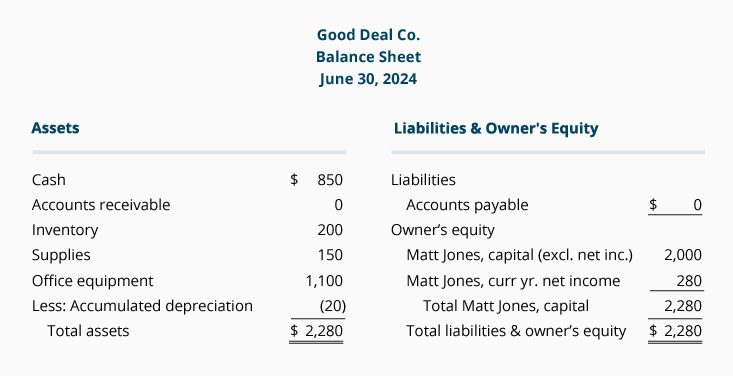
A balance sheet comparing June 30 amounts to May 31 amounts and the resulting differences or changes is shown here:
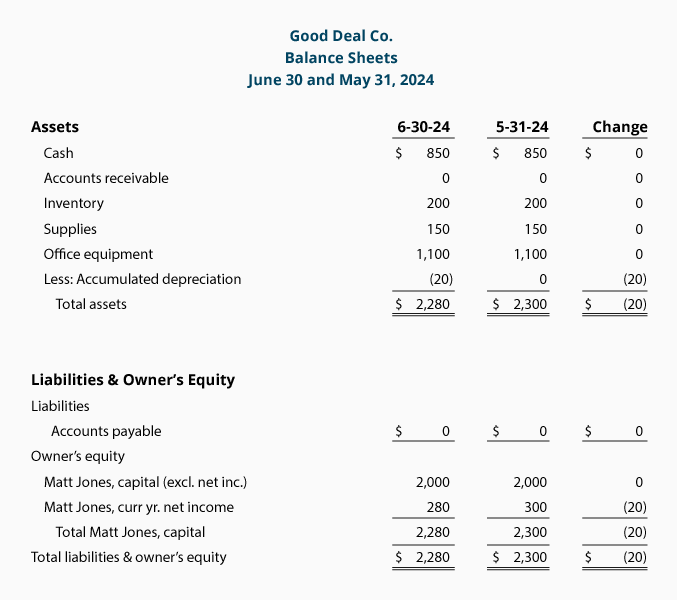
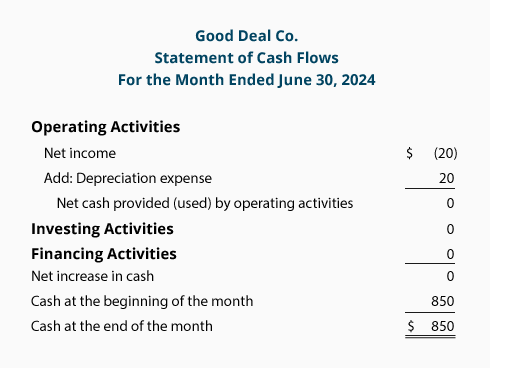
The cash flow statement for the month of June illustrates why depreciation expense needs to be added back to net income. Good Deal did not spend any cash in June, however, the entry in the Depreciation Expense account resulted in a net loss on the income statement. On the SCF, we convert the bottom line of the income statement for the month of June (a loss of $20) to the net amount of cash provided or used by operating activities, which was $0. This is done with a positive adjustment which adds back the $20 of depreciation expense.
The following comparative balance sheet shows the changes between December 31, 2022 and June 30, 2023:
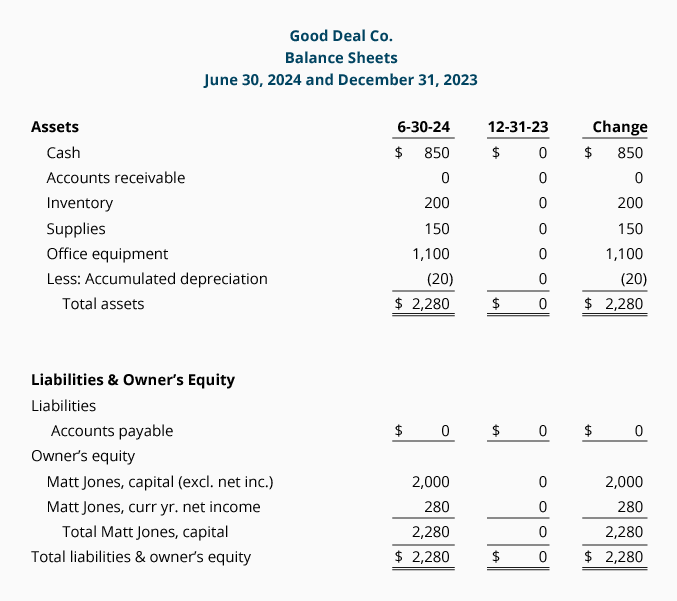
The SCF for the period of January 1 through June 30 is:
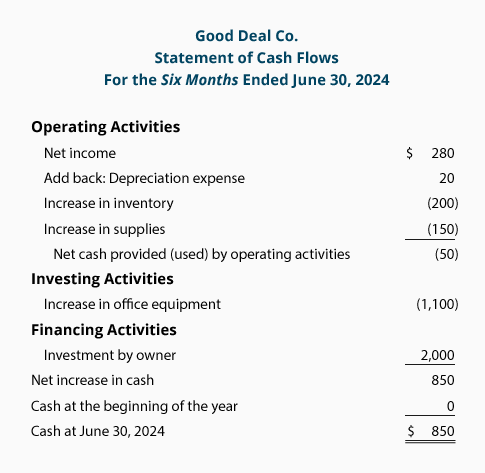
Let’s review the cash flow statement for the six months ended June 30:
Please let us know how we can improve this explanation